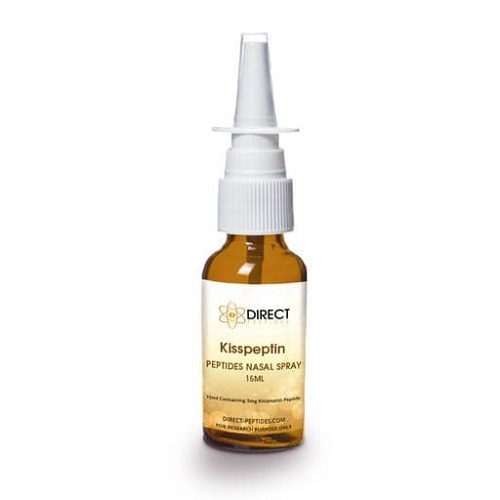
Kisspeptin is a naturally occurring peptide hormone essential for human reproduction. It triggers the release of gonadotropin-releasing hormone (GnRH), acting as a key regulator of sexual maturation. A deficiency in Kisspeptin can cause delayed or absent puberty. Current research explores its potential in addressing reproductive disorders such as infertility and polycystic ovary syndrome (PCOS). For those seeking to explore its benefits or participate in research-based treatments, a reliable starting point is to Buy Kisspeptin Peptide Saudi Arabia, where regulated and research-grade peptides are increasingly accessible.
- Kisspeptin 15ml contains: 5mg
- Kisspeptin 30ml contains: 10mg
Buy Kisspeptin Nasal Peptide Spray in Saudi Arabia
This product is for research use only and intended for trained professionals.
Kisspeptin, encoded by the KISS1 gene, plays a vital role in reproductive biology by stimulating GnRH release. This, in turn, triggers luteinising hormone (LH) and follicle-stimulating hormone (FSH) secretion, which are critical for sexual development and reproductive function.
Operating through its receptor GPR54, Kisspeptin is integral to the neuroendocrine regulation of reproduction. Mutations or deficiencies in Kisspeptin or its receptor can result in pubertal failure and infertility, emphasizing their reproductive significance.
Interestingly, Kisspeptin neurons show activity patterns aligned with the circadian rhythm, suggesting a role in timing the preovulatory LH surge. This hints that Kisspeptin nasal spray may assist in triggering this LH surge via GnRH neuron activation.
The Kisspeptin neural network is complex and widely distributed across mammalian species. Its evolutionary conservation is evident from similar systems found even in lower vertebrates and fish, underscoring its fundamental biological importance. Go to Homepage
Environmental factors also influence Kisspeptin production and activity, implicating it in seasonal reproductive cycles. Peripheral injections of Kisspeptin peptides show variable responses based on environmental stimuli. Saudi Arabian research indicates Kisspeptin signaling can be synchronized and enhanced by high-frequency stimulation, revealing its potential to modulate reproductive rhythms at both cellular and network levels.
